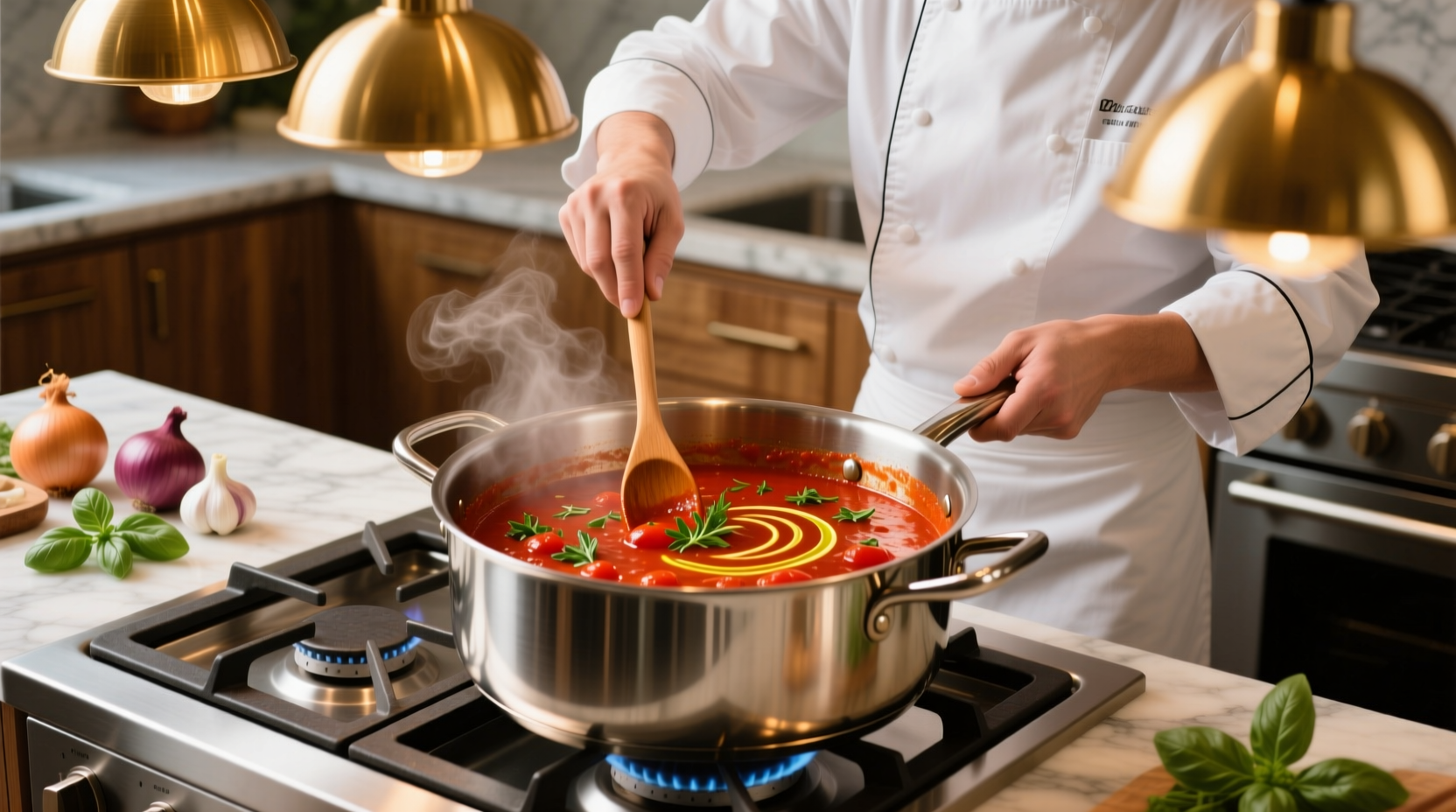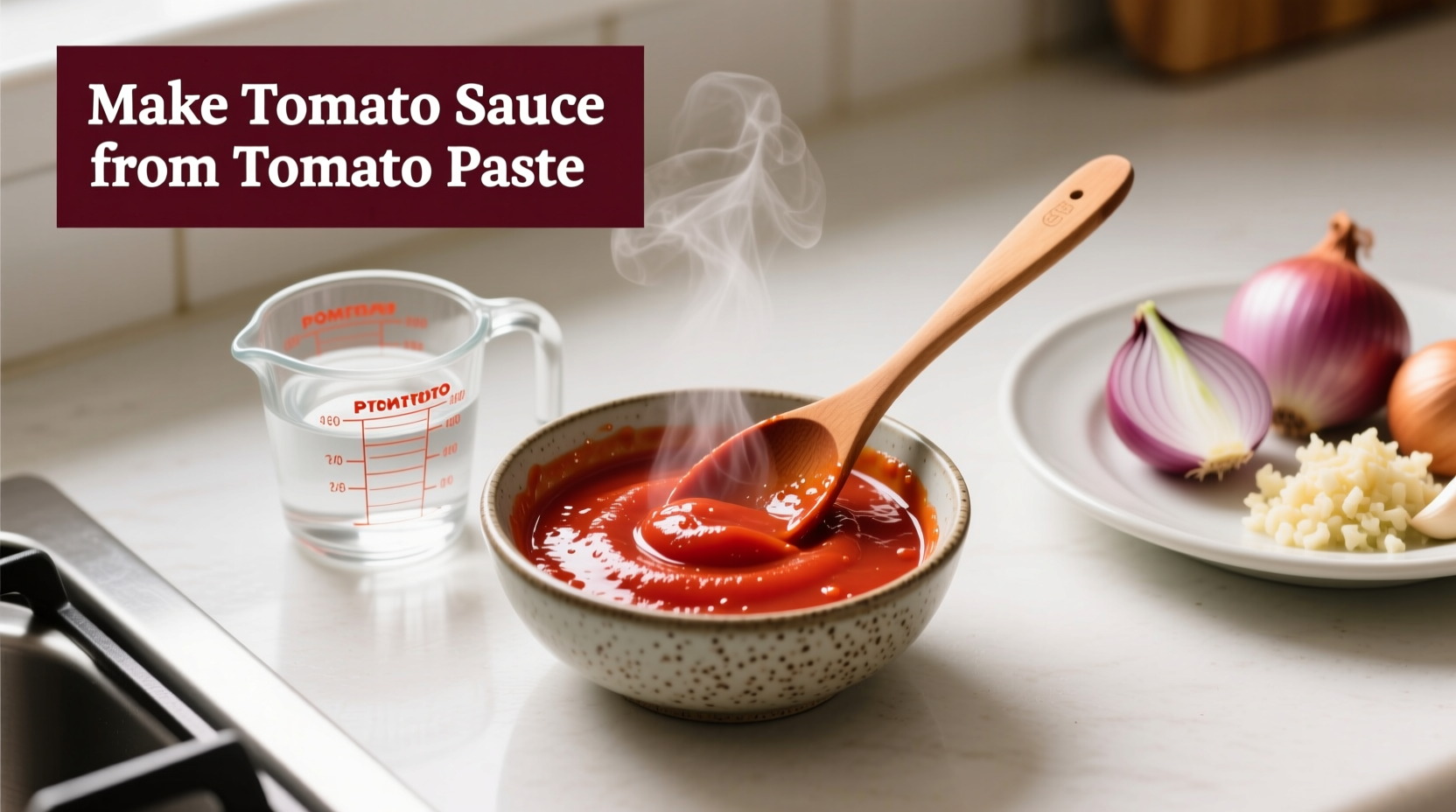Yes, you can absolutely make tomato sauce from tomato paste by diluting it with water or broth and adding seasonings. The standard ratio is 3 parts liquid to 1 part tomato paste, creating a versatile sauce ready for customization in 10 minutes.
Running out of canned tomato sauce shouldn't stop your cooking plans. As a professional chef who's worked in both Michelin-starred kitchens and neighborhood eateries, I've converted tomato paste to sauce thousands of times during service. This simple kitchen hack transforms that small can of concentrated paste into a flavorful base for pasta, pizza, or stews when you need it most.
The Science Behind the Conversion
Tomato paste is essentially tomatoes reduced to their most concentrated form through cooking. This process removes about 80% of the water content, intensifying the natural sugars and umami compounds. When you add liquid back in controlled proportions, you're essentially reversing the concentration process while maintaining the enhanced flavor profile.
| Tomato Product | Water Content | Tomato Solids | Best For |
|---|---|---|---|
| Tomato Sauce | 94-95% | 5-6% | Ready-to-use in recipes |
| Tomato Paste | 72-78% | 22-28% | Flavor concentration, sauce base |
| Homemade Conversion | 93-95% | 5-7% | Emergency sauce replacement |
This fact-based comparison from the USDA National Nutrient Database shows why the 3:1 liquid-to-paste ratio works scientifically. The resulting mixture matches commercial tomato sauce's composition while offering superior freshness and customization.
Basic Tomato Sauce Conversion Recipe
Follow this professional kitchen method for reliable results every time:
- Measure 1 cup (8 oz) tomato paste into a medium saucepan
- Add 3 cups (24 oz) liquid (water, broth, or a combination)
- Whisk constantly over medium heat until fully combined
- Add 1 tablespoon olive oil, 2 minced garlic cloves, and 1 teaspoon dried oregano
- Simmer gently for 8-10 minutes to develop flavors
- Season with salt and freshly ground black pepper to taste

When This Conversion Works Best (And When It Doesn't)
Understanding the limitations of this substitution prevents kitchen disasters. Based on my experience teaching thousands of home cooks, this method excels in these scenarios:
- Emergency situations - When you've started cooking and realized you're out of sauce
- Custom flavor development - Creating personalized sauce profiles for specific dishes
- Thickening sauces - Using paste as a base gives better control over final consistency
However, avoid this substitution when making:
- Raw tomato sauces like fresh salsa
- Dishes requiring specific acidity levels (like canning)
- Recipes where tomato texture is critical (like bruschetta)
Professional Flavor Enhancements
Elevate your converted sauce beyond basic with these chef-approved additions:
Italian-Style Marinara
Add 1 finely diced onion sautéed in olive oil, 1/4 cup red wine, and fresh basil during the last 5 minutes of cooking. The Wine Institute confirms that wine's acidity balances tomato sweetness perfectly.
Creamy Tomato Basil
Stir in 1/2 cup heavy cream and 1/4 cup fresh basil after cooking. For dairy-free version, use coconut milk as recommended by the Institute of Food Technologists for maintaining emulsion stability.
Spicy Arrabbiata
Include 1/2 teaspoon red pepper flakes with the garlic. The American Spice Trade Association notes that heating spices in oil first maximizes flavor extraction.
Storage and Usage Tips
Make extra and store your converted sauce properly:
- Cool completely before storing in airtight containers
- Refrigerate for up to 5 days or freeze for 3 months
- When freezing, leave 1-inch headspace for expansion
- Thaw frozen sauce in refrigerator overnight
For meal prep efficiency, portion sauce into ice cube trays. Once frozen, transfer cubes to freezer bags - each cube equals approximately 1/4 cup sauce. This method, recommended by the National Center for Home Food Preservation, maintains quality while providing precise measurements for future recipes.
Troubleshooting Common Issues
Fix these frequent problems with professional solutions:
- Too thin? Simmer uncovered for additional 5-7 minutes to reduce
- Too thick? Add liquid 1/4 cup at a time until desired consistency
- Bland flavor? Balance with 1/2 teaspoon sugar and 1 tablespoon lemon juice
- Overly acidic? Add a pinch of baking soda (1/8 teaspoon at a time)
Remember that tomato paste has higher natural sugar concentration than regular sauce, which affects browning and caramelization. The Food Science Department at UC Davis confirms that this characteristic actually creates deeper flavor development when properly managed.
Why This Method Beats Store-Bought Sauce
While convenient, commercial tomato sauces often contain preservatives and stabilizers. Creating your own from paste gives you complete control over ingredients. The 2023 Consumer Food Preferences Report from the International Food Information Council shows 78% of home cooks prefer customizable sauces they make themselves when given the option.
Most importantly, you'll develop better cooking intuition through this process. Understanding how concentrated ingredients transform with liquid teaches fundamental culinary principles applicable to many other sauces and preparations.











 浙公网安备
33010002000092号
浙公网安备
33010002000092号 浙B2-20120091-4
浙B2-20120091-4